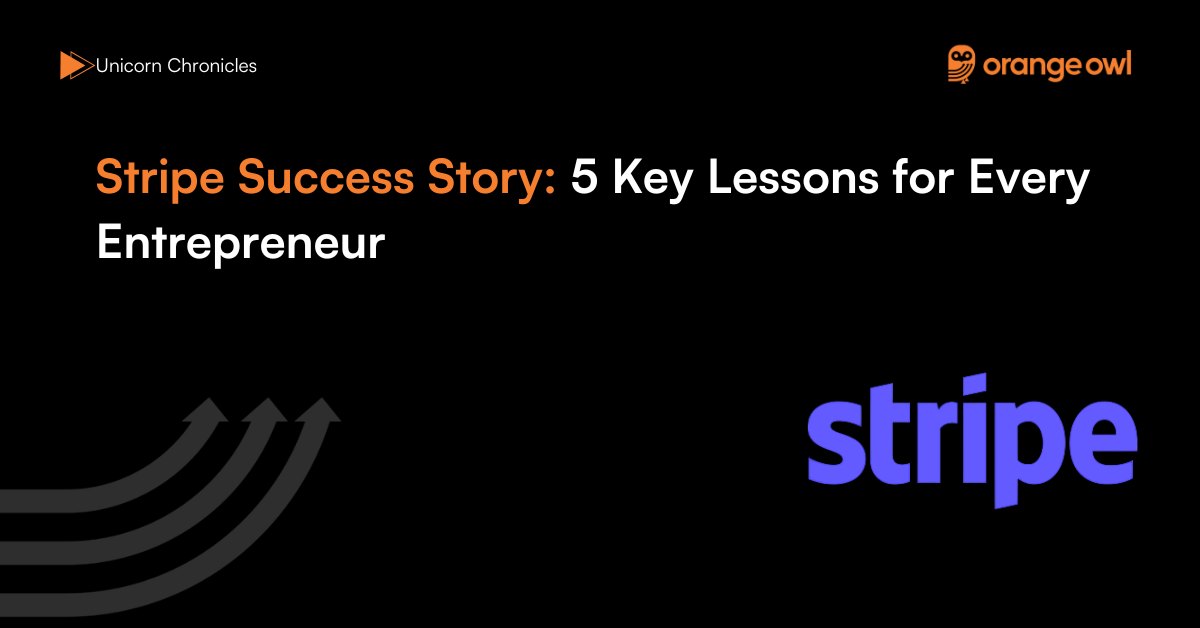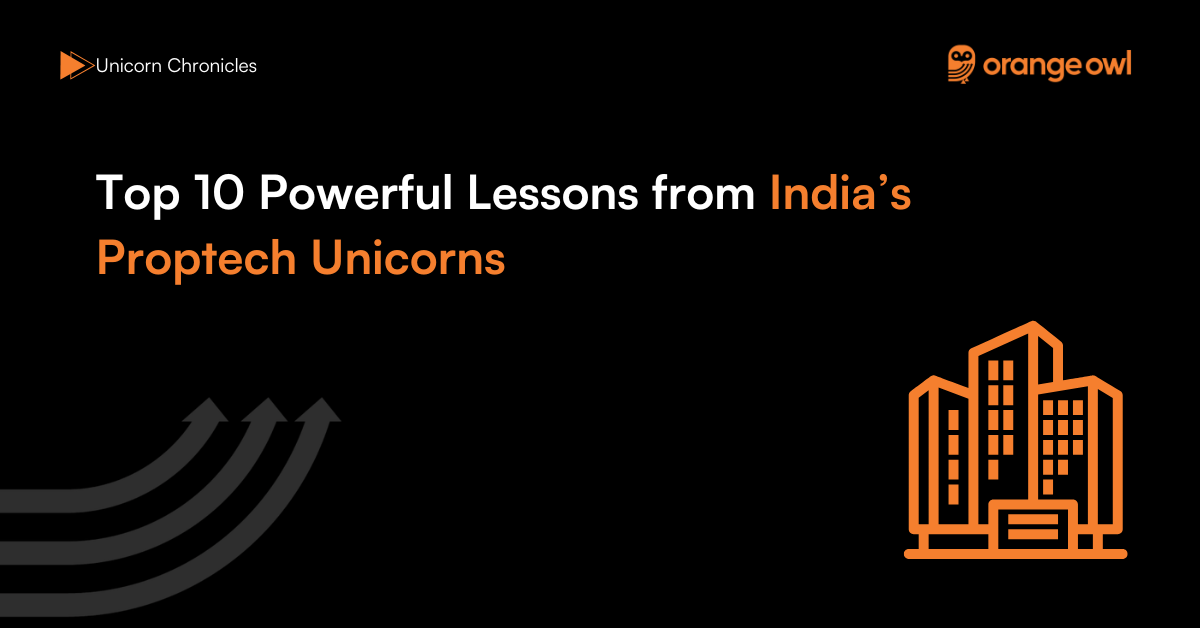Personalization in B2B Marketing: The Key to Business Success in 2025
Vivek Goel
January 17, 2025
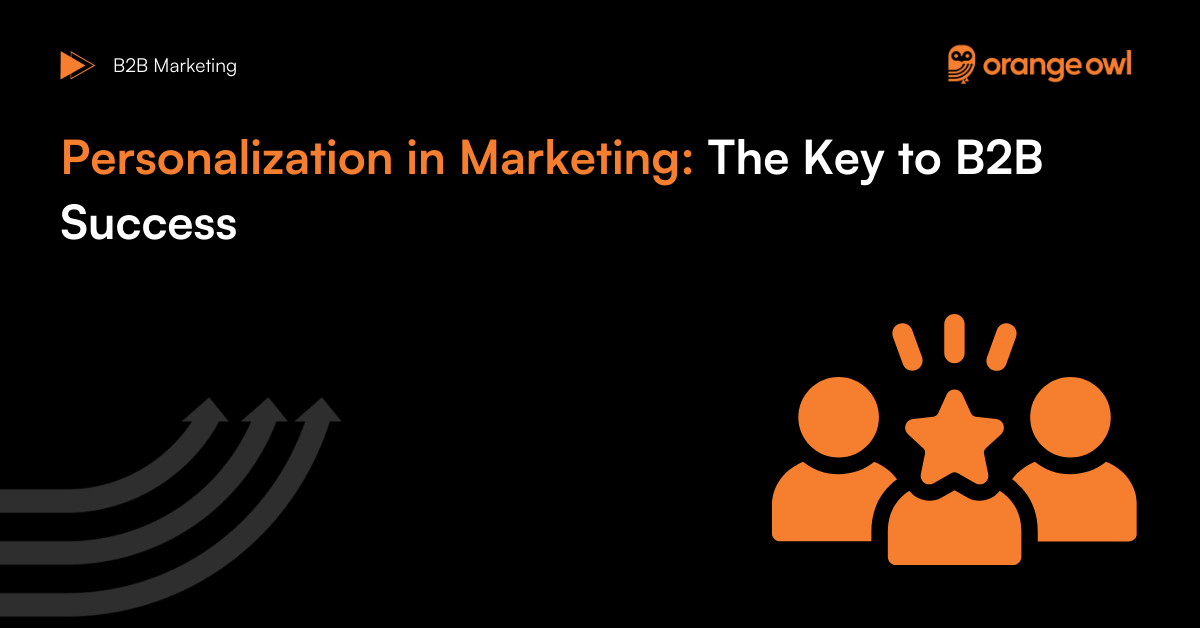
Table of Contents
Introduction
In today’s digital-first world, businesses and customers are inundated with marketing messages, making it increasingly challenging for brands to stand out. Amid this information overload, personalization in B2B marketing has emerged as the cornerstone of effective strategies. Unlike generic campaigns, personalization tailors messages, content, and experiences to address the unique needs, preferences, and challenges of individual customers or target accounts. This approach moves beyond simply addressing prospects by name—it delves into understanding their goals, pain points, and aspirations to create truly meaningful interactions.
The impact of personalization in B2B marketing is clear from the numbers:
- 80% of B2B buyers expect personalized interactions from their vendors, and 77% say their purchase decisions are influenced by targeted relevant content. (Source: Salesforce, State of the Connected Customer Report)
- Personalization strategies can boost B2B marketing ROI by up to 300% when effectively implemented. (Source: McKinsey & Company)
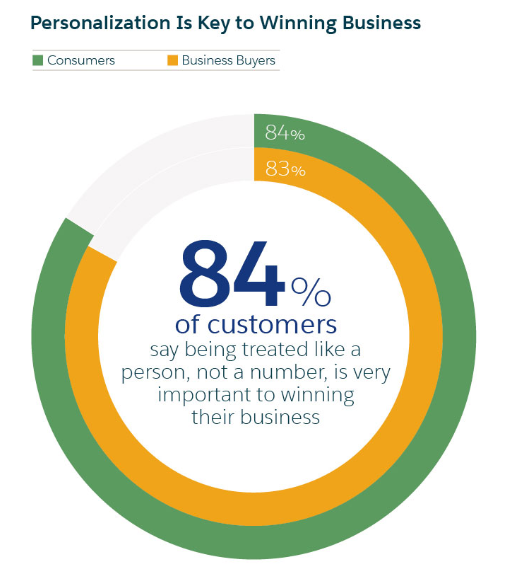
Source: SalesForce
For B2B companies—where buying cycles are longer and decisions involve multiple stakeholders—this personalized approach offers a competitive edge. By delivering relevant and timely information, businesses can foster trust, enhance engagement, and accelerate conversion rates.
This blog delves into why personalization is essential in B2B marketing, explores its unique role in this landscape, and offers actionable examples backed by compelling data. Get ready to uncover how tailored marketing can transform customer relationships and drive long-term success in the B2B space.
What is Personalization in B2B Marketing?
Personalized marketing refers to the practice of tailoring marketing messages, content, and experiences to align with the specific needs, preferences, and behaviours of individual customers or segments. In the B2B context, it extends beyond superficial customization, such as addressing prospects by name, to encompass deeper, data-driven insights into a business’s unique challenges, goals, and aspirations. It involves creating meaningful interactions at every touchpoint, designed to resonate with decision-makers and stakeholders involved in complex purchasing processes.
In B2B, personalized marketing plays a critical role due to the nature of the sales cycle, which often involves multiple stakeholders, longer decision timelines, and a higher emphasis on relationship-building. By using techniques like Account-Based Marketing (ABM), dynamic content, and data-driven strategies, personalized marketing helps businesses deliver targeted solutions, foster trust, and establish a competitive edge in their industries.
Why Personalization in B2B Marketing Matters?
1. Enhanced Customer Engagement
Personalized marketing ensures that the content resonates with the audience, leading to higher engagement rates. A study by McKinsey reveals that 71% of consumers expect companies to deliver personalized interactions, and 76% get frustrated when this doesn’t happen. Engaged customers are more likely to interact with emails, attend webinars, and participate in surveys, creating opportunities for meaningful connections.
Example:
A B2B company selling analytics software could use personalization to create dashboards showcasing metrics relevant to a prospect’s industry. This tailored approach shows immediate value and piques interest.
2. Improved Conversion Rates
Tailored marketing campaigns are more likely to convert leads into customers. Research shows that businesses leveraging advanced personalization achieve an average 20% increase in sales. By presenting solutions that directly address pain points, companies can reduce decision-making time and close deals faster.
Example:
A cloud service provider might offer a free trial with pre-configured settings optimized for the prospect’s business size and needs, reducing the learning curve and encouraging adoption.
3. Strengthened Relationships
In B2B, long-term relationships are critical. Personalized communication fosters trust and loyalty by demonstrating an understanding of the client’s unique challenges and goals. A strong relationship often translates into repeat business and valuable referrals.
Example:
A manufacturing firm could use personalization to send periodic updates about industry trends tailored to their client’s product category, showing they value the partnership beyond transactions.
The Impact of Personalization in B2B Marketing: Data Insights
Higher Engagement: Personalized emails deliver transaction rates that are six times higher than generic ones, as reported by Experian. This demonstrates the power of tailored communication in capturing the audience’s attention and driving action.
Improved ROI: Businesses implementing Account-Based Marketing (ABM) strategies experience a 97% higher ROI than those relying on traditional marketing methods, according to ITSMA. ABM’s targeted approach ensures resources are efficiently utilized, leading to significant returns.
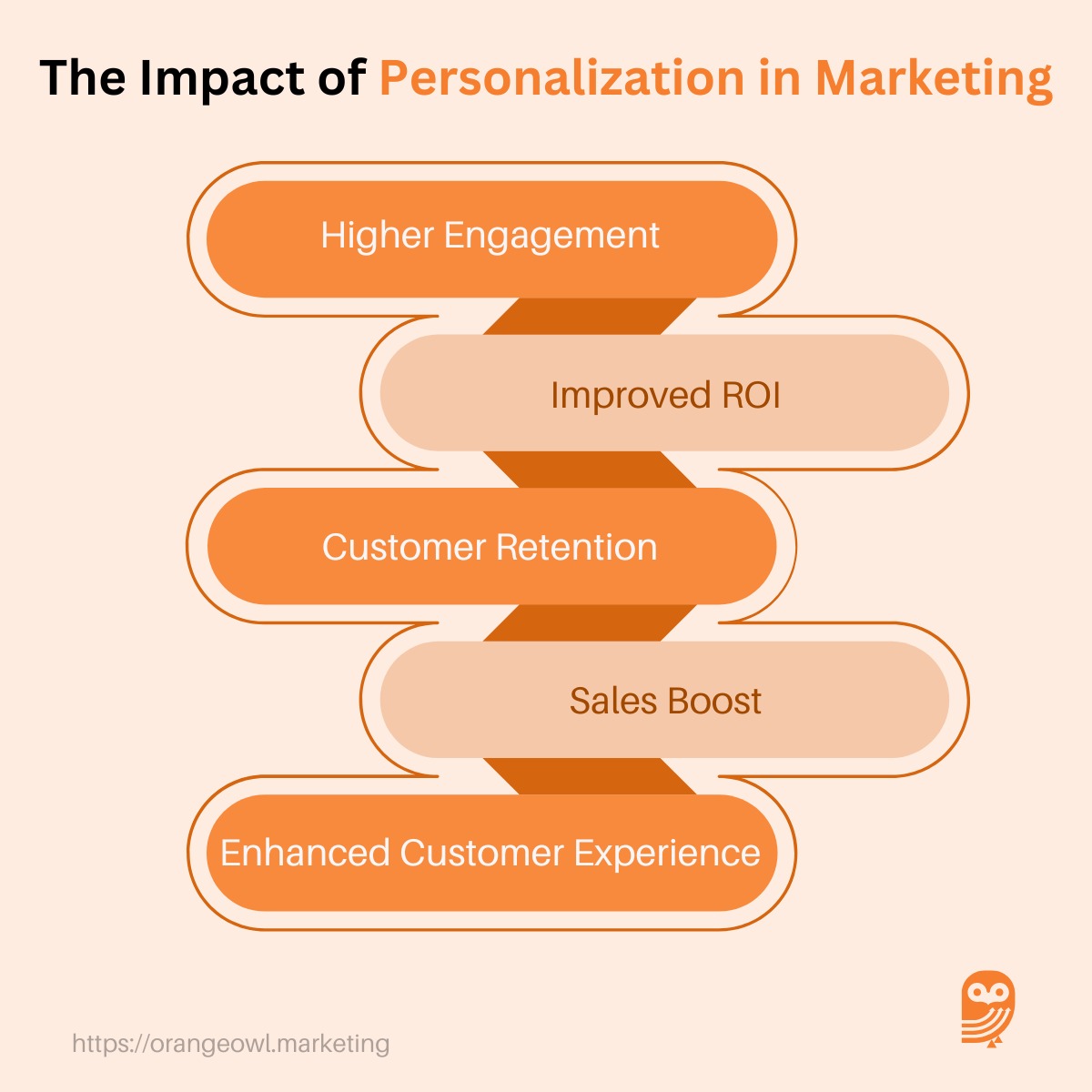
Customer Retention: Segment’s study reveals that 44% of consumers are more likely to become repeat buyers following a personalized experience. In the B2B context, this translates into stronger client loyalty and recurring revenue streams.
Sales Boost: McKinsey reports that companies adopting advanced personalization techniques have seen up to a 20% increase in sales. This underscores the transformative impact of personalized marketing on revenue growth and business performance.
Enhanced Customer Experience: According to Salesforce, 76% of customers expect companies to understand their needs and expectations. Personalized interactions not only meet these expectations but also foster trust and satisfaction, ultimately strengthening brand-customer relationships and enhancing the overall customer experience.
Personalization in B2B Marketing Across Channels
In B2B marketing, personalization goes beyond addressing prospects by name. It requires addressing the unique challenges, preferences, and objectives of both the organization and its decision-makers. This section explores various channels for personalization, detailing strategies to segment, personalize, and optimize interactions for maximum impact.
1. Account-Based Marketing (ABM)
Introduction:
ABM focuses on tailoring marketing efforts to specific high-value accounts, treating each as a market of one. This approach enhances alignment between marketing and sales teams, driving higher ROI.
Segmentation:
Identify high-value accounts using firmographics (industry, size, revenue).
Analyze account-specific pain points, goals, and challenges.
Segment based on buying stages or organizational priorities.
Personalization Options:
Custom landing pages with account-specific branding.
Tailored case studies and white papers.
Personalized outreach campaigns by sales teams.
Example:
A SaaS company creates custom landing pages for each target bank, featuring logos, regulatory insights, and testimonials from similar clients.
Key Takeaways/Expert Tips:
Invest in ABM tools like Demandbase or Terminus to streamline personalization.
Continuously refine content using engagement data from target accounts.
2. Dynamic Content and Email Personalization
Introduction:
Dynamic content enables the customization of website text, images, and emails based on user behaviour or demographics, fostering relevance and engagement.
Segmentation:
Group users based on website activity, previous purchases, or email interactions.
Segment lists by job roles, industries, or geographic regions.
Personalization Options:
Dynamic content blocks in emails featuring industry-specific stats.
Personalized call-to-actions (CTAs) reflect the user’s position in the sales funnel.
Tailored product recommendations on websites.
Example:
A logistics software provider emails supply chain managers with personalized case studies and demo videos based on previous interactions.
Key Takeaways/Expert Tips:
Use marketing automation platforms like HubSpot or Marketo.
A/B tests personalized content to optimize effectiveness.
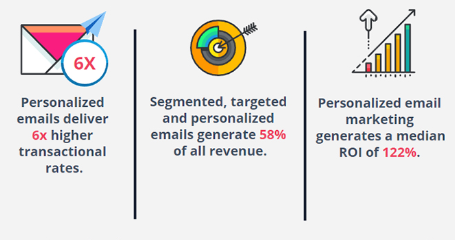
Source: Instapage
3. Data-Driven Insights
Introduction:
Leveraging data analytics allows companies to anticipate customer needs and personalize interactions, enhancing satisfaction and retention.
Segmentation:
CRM data can be used to categorize customers by purchase history and lifecycle stage.
Predict needs based on trends in similar accounts.
Personalization Options:
Proactive alerts for upcoming product needs or renewals.
The bespoke consultancy offers to address potential challenges.
Example:
An IT services company tracks hardware lifecycles to provide upgrade recommendations before critical failures occur.
Key Takeaways/Expert Tips:
Regularly update CRM data to maintain accurate predictions.
Train teams to use insights effectively in customer interactions.
4. Website Personalization
Introduction:
Website personalization adapts the user experience to match visitor preferences, driving engagement and conversions.
Segmentation:
Categorize visitors by new vs. returning users, geographic location, or past browsing behaviour.
Leverage cookies and user profiles for deeper insights.
Personalization Options:
Dynamic banners reflecting user industry or interests.
Custom product suggestions based on previous searches.
Personalized chat support or recommendations.
Example:
A SaaS company displays general product details to new visitors and previously viewed categories to returning users.
Key Takeaways/Expert Tips:
Use AI tools like Optimizely or Evergage for real-time personalization.
Regularly analyze user behaviour to refine strategies.
5. Social Media Personalization
Introduction:
Tailoring social media content and ads to audience preferences can significantly boost engagement and relevance.
Segmentation:
Group audiences by job roles, industries, or interaction history.
Use social listening tools to identify key topics and trends.
Personalization Options:
Retarget ads based on website visits or previous social interactions.
Craft posts addressing industry-specific pain points.
Example:
A B2B tech company uses LinkedIn’s Matched Audiences to retarget visitors with personalized ads based on their job role.
Key Takeaways/Expert Tips:
Utilize CRM data to craft targeted social campaigns.
Monitor campaign performance to fine-tune personalization efforts.
6. Content Marketing Personalization
Introduction:
Delivering targeted and relevant content to audience segments improves engagement and moves prospects down the sales funnel.
Segmentation:
Group users by industry, company size, or stage in the sales cycle.
Use analytics to identify popular content themes.
Personalization Options:
Industry-specific white papers or case studies.
Personalized e-books addressing segment-specific challenges.
Example:
An enterprise software provider delivers healthcare compliance content to visitors from the healthcare industry.
Key Takeaways/Expert Tips:
Build a diverse content library catering to various segments.
Use automation tools to suggest content dynamically.
7. Video Marketing Personalization
Introduction:
Personalized video content resonates with viewers by addressing their specific business needs and challenges.
Segmentation:
Segment by industry, company size, or job role.
Use interaction data to tailor video scripts.
Personalization Options:
Embed names or company logos in videos.
Create role-specific demo tours showcasing relevant features.
Example:
A cloud services provider sends a personalized video tour to prospects, highlighting industry-specific solutions.
Key Takeaways/Expert Tips:
Invest in video personalization tools like Vidyard.
Use analytics to measure video performance and refine strategies.
8. Direct Mail Personalization
Introduction:
Direct mail remains effective in the digital age when personalized with actionable insights.
Segmentation:
Segment based on past purchases, industry, or geographic location.
Use CRM data to tailor messaging.
Personalization Options:
Include industry-specific success stories.
Highlight solutions tailored to the recipient’s pain points.
Example:
A B2B healthcare marketing firm sends brochures with data on improving patient care to hospital administrators.
Key Takeaways/Expert Tips:
Combine digital insights with traditional direct mail.
Use interactive elements like QR codes to drive engagement.
9. Event Personalization
Introduction:
Personalized events enhance attendee experiences by tailoring content, sessions, and interactions.
Segmentation:
Group attendees by professional interests or past event interactions.
Use registration data to identify preferences.
Personalization Options:
Offer curated session agendas based on attendee profiles.
Provide networking recommendations aligned with interests.
Example:
A tech conference app recommends sessions based on attendees’ past preferences and industry.
Key Takeaways/Expert Tips:
Use event management tools for seamless personalization.
Follow up with tailored post-event content.
10. Chatbot Personalization
Introduction:
AI-powered chatbots enhance customer interactions by delivering tailored support and recommendations.
Segmentation:
Segment users based on past interactions or account details.
Categorize inquiries by industry or common challenges.
Personalization Options:
Provide dynamic FAQs tailored to user needs.
Suggest relevant resources or solutions during chats.
Example:
A financial services chatbot offers tailored advice and product recommendations based on user history.
Key Takeaways/Expert Tips:
Train chatbots with comprehensive customer data.
Regularly update chatbot responses using analytics.
By leveraging these strategies across channels, businesses can unlock the true potential of personalization in B2B marketing, driving deeper connections, higher ROI, and long-term success.
Examples of Successful Personalization in B2B Marketing
Salesforce’s “Trailhead” Platform
Salesforce leverages personalization by offering tailored learning paths through its Trailhead platform. The content adapts based on a user’s role, skill level, and industry, providing value at every step of their journey. By aligning learning resources with customer needs, Salesforce enhances user engagement and loyalty.
IBM’s Watson Campaign Automation
IBM uses AI-driven insights to craft personalized marketing campaigns. For example, its AI platform, Watson, identifies key decision-makers within a target company and tailors email campaigns to address their specific interests. This approach has helped IBM achieve higher response rates and improved campaign ROI.
How to Implement Personalization in B2B Marketing?
1. Segment Your Audience
Group your audience based on factors like industry, company size, and buyer persona. This segmentation allows you to craft messages that address specific needs and resonate with the intended audience.
Example:
A consulting firm might segment its audience into startups, mid-sized companies, and large enterprises, delivering distinct content highlighting services most relevant to each category.
2. Leverage Technology
Invest in tools like AI, CRM platforms, and marketing automation software to collect and analyze data. These technologies can help create personalized experiences at scale and reduce manual effort.
Example:
A financial services company might use AI to analyze client data and recommend investment strategies tailored to their risk tolerance and business goals.
3. Create Valuable Content
Develop resources such as whitepapers, webinars, and case studies tailored to the unique challenges of your target accounts. Focus on providing actionable insights that clients can immediately implement.
Example:
A cybersecurity firm could create a detailed whitepaper on preventing ransomware attacks customized for different industries such as healthcare, finance, and retail.
4. Engage on the Right Channels
Use data to determine which platforms your audience prefers, whether it’s LinkedIn for thought leadership content or email for direct communication. Ensuring your presence on the right channels increases the chances of engagement.
Example:
A technology vendor might focus on LinkedIn to share thought leadership articles while using email to send detailed product demos to interested prospects.
Personalization in B2B Marketing: Conclusion
Personalization in B2B marketing is no longer optional; it’s a necessity. For B2B companies, personalization not only improves engagement but also drives measurable business outcomes such as increased ROI, stronger client relationships, and higher retention rates. By leveraging data, investing in technology, and creating tailored content, B2B marketers can unlock the full potential of personalization.
As the business landscape continues to evolve, those who prioritize personalized marketing will be better equipped to navigate the challenges and seize the opportunities ahead. For organizations looking to gain a competitive edge, the time to personalize is now.
Frequently Asked Questions(FAQs) on Personalization in B2B Marketing
Personalization in marketing involves tailoring messages, content, and experiences to individual preferences, behaviors, or demographics. It uses data to create relevant and meaningful interactions, making customers feel understood and valued.
In B2B, buying decisions involve multiple stakeholders and longer cycles. Personalization addresses specific challenges and goals of target accounts or individuals, leading to better engagement, trust, and conversion rates.
B2B personalization focuses on account-specific messaging and long-term relationship building, while B2C often emphasizes individual preferences and immediate purchasing behaviors.
Tools like CRM systems, marketing automation software (e.g., HubSpot, Marketo), predictive analytics platforms, and AI-based solutions enable data collection, segmentation, and tailored interactions.
Common challenges include data privacy concerns, integrating data from multiple sources, maintaining accuracy in customer profiles, and scaling personalized efforts efficiently.
Common challenges include data privacy concerns, integrating data from multiple sources, maintaining accuracy in customer profiles, and scaling personalized efforts efficiently.
ABM is a personalization strategy in B2B where marketing efforts are focused on specific accounts. It involves creating highly tailored content and experiences for target companies to address their unique needs.
Yes, small businesses can use personalization to build strong customer relationships. Even simple tactics like sending personalized emails or recommending relevant products can enhance customer loyalty and retention.
Data is the backbone of personalization. It helps businesses understand customer behavior, preferences, and pain points, enabling them to craft relevant messages and predict future needs.
Dynamic content adapts in real-time to reflect the user’s preferences or behavior. For example, website banners or email content that changes based on a visitor’s industry or browsing history enhances relevance and engagement.

